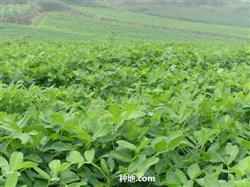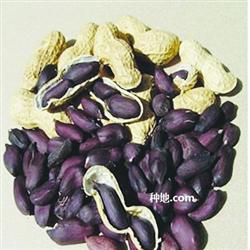How to fertilize peanuts

How to fertilize peanuts? The fertilizer requirement characteristics of peanut should be clear about three points: first, the common characteristics with other crops are that they need not only a large number of elements, but also medium elements and trace elements. These elements are equally important and can not be replaced each other; second, peanut is different from grain and cotton crops in that it can plant rhizobium to produce part of nitrogen fertilizer; third, it is very sensitive to calcium, magnesium, sulfur, molybdenum, boron and other elements. Peanut nitrogen deficiency leads to slow vegetative growth, yellow leaves, small leaves, few pods and not full pods: phosphorus deficiency, underdeveloped peanut roots, few nodules, decreased nitrogen fixation ability, greedy green late ripening; potassium deficiency, yellowish green leaves, withering at the top of the plant; sulfur deficiency, will reduce the protein content of nuts; magnesium deficiency, chlorophyll can not be formed normally, serious leaf albinism, leaf vein chlorosis Aluminum deficiency reduces the number of nodules and branches, and makes chlorophyll aging; boron deficiency, the main stem and lateral branches are short, the plant is short and clumpy, and the growth point dies in severe cases. In order to give full play to the effect of fertilization technology on peanut yield, measures should be taken according to local conditions and balanced fertilization according to seedlings. First, we should pay attention to peanut fertilization. After sowing peanuts to before the formation of rhizobium, one depends on the nutrition in the kernel to maintain growth; the other depends on the absorption of nutrients in the soil. Lack of fertilizer is difficult to strengthen seedlings, and inhibit the growth in the middle and later stage. The second is to apply fertilizer according to the soil. The practice shows that the lower the soil fertility, the greater the yield increase with the application of fertilizer, followed by the medium fertility soil, and the fertile soil has no obvious effect on increasing yield. Therefore, peanut fertilizer should be applied in the soil with poor fertility. The third is to mix and apply seed fertilizer. Peanut seeds per mu can be mixed with 0.2 kg of peanut rhizobium agent, mixed with 2.5 to 10 grams of molybdic acid, or 0.4 to 1 gram of boric acid per kilogram of seeds. Peanut kernels can be wet with rice soup first, and then 1.0 to 1.5 kilograms of gypsum per mu of seeds. These seed dressing methods can supplement fertilizer in time and promote the growth of peanut seedlings. Each place can choose the application according to the local reality. Fourth, it is necessary to fertilize the seedlings. According to the study, the proportion of nitrogen, phosphorus and potassium required by peanuts is 1.0 VOL 0.18 Vol 0.48. Less fertilizer is needed at the seedling stage, about 25% of the total fertilizer requirement at the flowering stage, and 50% to 60% of the total fertilizer requirement at the podding stage. In this regard, in the application of fertilizer, one is the general application of base fertilizer. About 1500 kg of rotten organic fertilizer is applied per mu, 15 to 20 kg of phosphate fertilizer is applied, and 5 kg of urea is applied to the soil with poor fertility. Second, before the beginning of flowering, 500 to 1000 kg of rotten organic fertilizer, 4 to 5 kg of urea and 10 kg of superphosphate are applied per mu, combined with ploughing and soil cultivation. Third, at the early flowering stage, 150 ml of Huimanfeng active liquid fertilizer was sprayed with 50 kg of clear water per mu, which had a significant effect on promoting branches to increase the number of pods and increasing the rate of full fruit; fourth, at the podding stage, 0.2% to 0.3% potassium dihydrogen phosphate and 1% urea solution could be sprayed to supplement phosphorus and nitrogen. Click to get more peanut planting technology click to get more grain and oil crop planting technology
- Prev

What is the reason why peanut leaves suddenly turn white?
How to spray foliar fertilizer on peanuts? Please guide foliar spraying is a common fertilization method in production, suitable for peanut foliar topdressing and its application methods are as follows: 1. Urea in the middle and later stage of peanut growth, if the plant has the phenomenon of de-fertilizing, or continuous rainfall during the peanut growing period causes stagnant water in the field and fertilizer absorption in the root.
- Next

How to grow black peanuts?
How to grow black peanuts? Please guide the cultivation of black peanuts can refer to the following planting techniques: first, black peanuts are not strict with the soil, it is suitable for planting in all kinds of soil with pH 5.5-7.2, and it is best in the soil with deep soil layer, active plough layer, good soil property and good drainage. Second, planting black.
Related
- The first cup of black tea in spring, the flavor and history of tea gardens in Kenya, Africa
- The computer can not only choose potatoes, but also grow tea rice. AI will grow winter oolong tea champion.
- It is not only the inflated tea bitten by insects, but also engraved with the four seasons tea in Beipu.
- The Oriental Beauty Tea Festival in Zhuxian County takes the stage at the weekend to experience the plus-size feast of oil tea.
- & quot; Oriental Beauty Tea & Exploration of Emei in Hsinchu, the hometown of quot;
- The new variety of strawberry "Tainong 1" dessert is the first choice with mellow aroma. Crimson gorgeous
- History of Tea in Taiwan: from Wild Inner Mountain to Export Tea Garden
- Two types of Taiwan Oriental Beauty Black Tea won the British three-Star Award for Childhood Tea Xiang Zhang Jiaqi changed from pilot to champion tea maker.
- Banana species and varieties: the planting history of Taiwan Xianren banana and dwarf banana is long, is banana disease resistant?
- Coffee planting Technology: Qianjie Coffee from Seedling to harvesting

